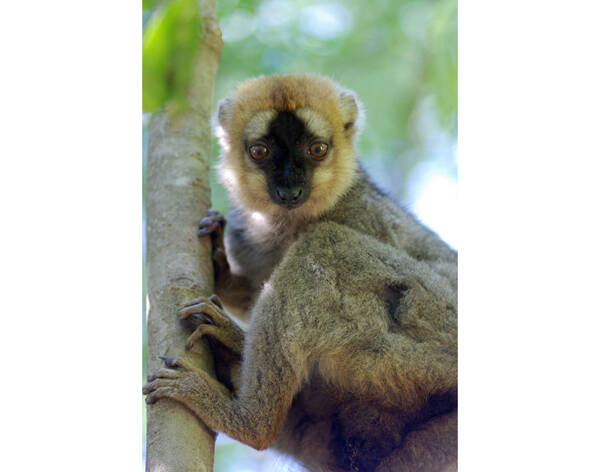Eulemur fulvus
IUCN
LCBasic Information
Scientific classification
- name:Eulemur fulvus
- Scientific Name:Eulemur fulvus,Brown Lemur
- Outline:Primates
- Family:Lemuridae Lemuridae
Vital signs
- length:43-50cm
- Weight:2-3kg
- lifetime:20-25years
Feature
The muzzle and crown are usually dark, with a light patch above the eye, which is orange-red.
Distribution and Habitat
The brown lemur has a distinct discontinuous distribution, found west of the Betsibuka River in northern Madagascar, with scattered distribution in the highland forests, and north of the Mangoro River in eastern Madagascar. It has also been introduced to the Comoros island of Mayotte.
It is found in tropical rainforests, in moist montane forests and dry deciduous forests. The lemur is arboreal, spending most of its time in the upper canopy.
Appearance
The brown lemur is a medium-sized lemur. The head and body are 43-50 cm long, the tail is 41.5-51 cm long, and the weight is 2-3 kg. The color of the upper body ranges from brown to yellow or black, the fur on the back is brown-gray, and the ventral side is grayish white. The tail is darker in color, the face is slightly black, the muzzle and crown are usually dark, ranging from dark gray to black, with light spots above the eyes, and whiskers around the face. The lower body is slightly grayish white. There is pale gray-brown fur around the ears, cheeks and under the chin. The tail is densely furred and the back is arched when moving on the ground or branches. The eyes are a rich orange-red.
Details
Brown Lemur (scientific name: Eulemur fulvus) is a medium-sized lemur.

Brown Lemur is active at different times throughout the day and night. It lives in groups, but the groups are not fixed. Usually there are 3 to 12 individuals in a group, sometimes 9-12 together. Each individual smears urine on the body for scent identification. There is overlap in territory, but adjacent groups generally avoid contact. It is highly adaptable to the forest.
The brown lemur forages in trees or on the ground. It is omnivorous, and its main food is fruits, plants and gums. It also eats bread, biscuits, monkey food, bananas, apples, guavas, tomatoes, monkey rice cakes, papayas, flower cucumbers, carrots, etc. In some areas, it also eats insects, centipedes, millipedes, etc.
The reproduction of the brown lemur is seasonal, and mating usually occurs in May and June. The gestation period is about 120 days, and the cubs are born before the rainy season in September and October. Generally, only one offspring is born per litter, and there are also reports of twins. The brown lemur reaches sexual maturity in 1-3 years and lives 20 to 25 years in the wild.
The brown lemur has a limited distribution range and is considered to have a moderate decline in numbers due to habitat loss. It has been listed as a near threatened species. It lives mainly in four national parks (Ankarafantsika, Mantadia, Andringitra and Zahamena), two strict nature reserves (Tsaratanana and Zahamena), and seven special reserves (Ambatovaky, Ambohitantely, Analamazaotra, Bora, Mangerivola, Manongarivo and Tampoketsa -Analamaitso) on the Falkland Islands (Mittermayer et al., 2008). There are hundreds of brown lemurs living in mixed populations in the Comoros and Mayotte (a small island that is an unofficial lemur sanctuary). As of 2009, there are approximately 160 black lemurs living in zoos around the world, but unfortunately many appear to have hybridized with other lemurs or are of unknown origin (ISIS 2009).
Listed in the 2013 IUCN Red List of Threatened Species ver 3.1 - Near Threatened (NT).
Listed in Appendix I of the Washington Convention on International Trade in Endangered Species (CITES).
Protect wild animals and stop eating game.
Maintaining ecological balance is everyone's responsibility!








